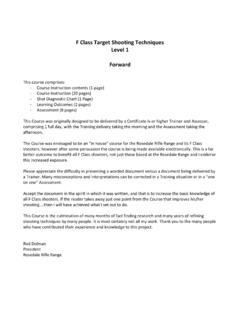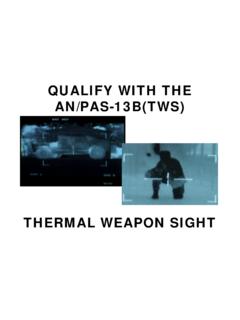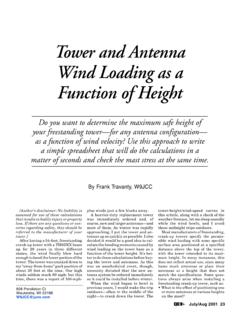Transcription of TOPIC INSPECTION PACK FALLS FROM HEIGHT
1 TOPIC INSPECTION PACK FALLS FROM HEIGHT January 2007 SECTION 1 - BACKGROUND INFORMATION AND STATISTICS Wha t a re FALLS from HEIGHT ? Nature of the Problem and Statistics (Overview) Inspecting Construction Work FALLS from vehicles Contacts for Information The Work at HEIGHT Regulations 2005 (WAHR) SECTION 2 - GUIDANCE ON THE MAN AGEMENT OF THE TOPIC AREA Introduction to the Risk Control Indicators Target Area 1 Identification of activities and precautions involving FALLS from HEIGHT Fragile surfaces Target Area 2 General Requirements for Collective Means of fall Prevention ( guard rails, toe boa rds and similar me ans of protection) Sta irs General Scaffolds Tower Scaffolds Mobile Elevating Working Platforms (MEWP S) Working Platforms on Fork Lift Trucks Work Restraint Collective Safeguards for Arresting FALLS Requirements for personal f all protection systems Ladders - Portable Leaning and Stepladders Target Area 3 SECTION 3 - INSPECTION AIDE-MEMOIRE SECTION 4 - SECTOR ENFORCEMENT GUIDANCE, LEGAL REQUIREMENTS AND REFERENCES HSE Sectors LA SECTORS SECTION 5 - CROSS SECTOR REFERENCES SECTION 6 TEMPLATE NOTICES SECTION 7 - INSPECTOR CHECKLIST SECTION 1 - BACKGROUND INFORMATION AND STATISTICS What are FALLS from HEIGHT ?
2 The Work at HEIGHT Regulations 2005 (WAHR) define work at HEIGHT as being work in any place, including a place at or below ground level, (including access and egress from such a place of work) where if measures required by the Regulations were not taken, a person could fall a distance liable to cause personal injury. Precautions are needed where there is a risk of injury from a fall irrespective of fall HEIGHT . The Regulations require risk assessment to decide whether precautions are needed and in what form . Precautions are expected where there is a risk and in 9 times out of 10 this will be the provision of fall prevention in the form of guardrails. For low FALLS FALLS below head HEIGHT , duty holders should assess the risk and provide sensible precautions that reflect the risk. Low FALLS should be dealt with where they are matters of evident concern ( a narrow working platform less than head HEIGHT alongside a production line particularly if a person has to work with their back to the open edge or a fall below head HEIGHT onto an uneven surface containing sharp edges or protrusions.)
3 A risk assessment should conclude that fall prevention should be required in both situations as there is a risk of injury if a person was to fall ). Over half of the major injuries reported are due to low FALLS . Duty holders should move away from thinking high and low FALLS . They should think all FALLS and take precautions where there is a risk of injury from a fall . Any culture that thinks no risks exist below head HEIGHT should be challenged. Slips and trips on the same level are not treated as a fall from HEIGHT , see the Slips and Trips TOPIC INSPECTION Pack. Nature of the Problem and Statistics (Overview) Falling from a HEIGHT continues to be the most common kind of fatal injury to workers, accounting for 22% of fatalities in 2005/06. However, the number of fatal injuries of this kind decreased in 2005/06, from 53 to 46, the lowest on record.
4 High FALLS have reduced to 26, from an average of 48 per year over the past five years. In 2005/06, there were 24 fatal injuries as a result of falling from HEIGHT to workers in construction, a decrease of 4 from 2004/05. 13 were as a result of high FALLS . There was a decrease in the number of major injuries due to falling from a HEIGHT in 2005/06 to 3351 compared to 3799 in 2004/05. Of these, 66% (2202) were as a result of falling from below head HEIGHT . FALLS below head HEIGHT therefore continue to be a significant problem in terms of both fatal and major injuries. This INSPECTION pack is designed to help inspectors target the TOPIC area so that duty holders manage risks and continue to reduce the rate of accidents as a result of FALLS from HEIGHT . Fatal accidents to workers in HSE and LA sectors 2004/05 Agriculture 6 Manufacturing 7 Construction 28 Retail 0 Hotels and Restaurants 2 Transport 5 Offices 4 Other Services 1 Total 53 Major Injuries fall injuries in 2004/05 represented of all reported major injuries to employees (fourth most common kind of major injury, behind slips/trips, handling, and struck by moving objects).
5 Major injuries for main HSE Sectors 2004/05 Agriculture 90 Extraction/Utilities 51 Manufacturing 638 Construction 1343 Transport 592 Education/Health 199 Major injuries for main LA Sectors 2004/05 Retail 384 Office 421 Hotels & Restaurants 65 Causes of FALLS from HEIGHT The main cause of all injuries from FFH is people falling from ladders. HSE and LA enforced sectors 2004/05 for all workers (employees, self employed) and all heights (High, low and unspecified) Fatals Major Ladders 10 1337 Roofs 12 179 Scaffold 6 317 Work area/platforms etc 11 566 Vehicle/plant 13 883 High and Low FALLS Figures for 2004/05 show a total of 37 fatal accidents attributed to high FALLS (above head HEIGHT ) to workers in HSE and LA enforced premises and 7 fatals attributed to low FALLS (below head HEIGHT ).
6 Major injuries due to high FALLS in 2004/05 numbered 1060 and low FALLS 2423. Trends indicate that the major injury rate for high FALLS has fallen since 1998/99 but the incidence of low fall major injuries has increased. Inspecting Construction Work Non Construction Inspectors should, as part of the fall From HEIGHT TOPIC inspections, deal with procurement, management and control of contractors who carry out work at HEIGHT at premises they inspect. This will include roofers, minor building work, electrical contractors, cleaners and plant repair specialists. See Target area 3 Systems for the procurement and control of contractors (Section ) and INSPECTION Checklist (Section 7) For advice on non-CDM and reactive work and matters of evident concern refer to OM 2002/08. (LA inspectors can refer matters of evident concern to their ELO if they are outside of their area of enforcement) FALLS from vehicles FALLS from vehicles during loading/unloading, getting into and out of the cab are covered by the Workplace Transport programme.
7 See the Workplace Transport INSPECTION Pack for more information on this. In such circumstances, the work should be recorded using the Workplace Transport Risk Control Indicator (RCI). Section 4 contains some sector guidance on the road haulage industry. See the information under the heading CACTUS. The FALLS from HEIGHT pack will cover FALLS involving vehicles used for access a lorry mounted MEWP (Mobile Elevating Working Platform) or a working platform on a forklift truck. Contacts for Information The HSE contact for cross sector FALLS from HEIGHT issues is the Safety Unit, Manchester, VPN 516 8200. Sector specific FALLS from HEIGHT queries should be addressed to the relevant sector. LA inspectors should address any queries via their ELO. Free information sheets and leaflets quoted throughout the pack should be available from the HSE Website.
8 The Work at HEIGHT Regulations 2005 (WAHR) The Regulations came into force on 6 April 2005. They replace those parts of the Construction (Health, Safety and Welfare) Regulations 1996 and some parts of the Workplace (Health, Safety and Welfare) Regulations 1992 and other legislation, which deal with FALLS and falling objects. One set of Regulations now covers the risks from work at HEIGHT across all sectors of work in the UK. Schedule 8 of the Regulations lists the revocations. The Regulations can be downloaded from the HMSO website. Search using Statutory Instrument number 735. SECTION 2 - GUIDANCE ON THE MANAGEMENT OF THE TOPIC AREA Introduction to the Risk Control Indicators This section contains guidance on the management of the TOPIC area. It contains guidance on the risk control indicators that are the cross sector target areas for action that inspectors should enquire about during visits.
9 They are a key means of assessing duty holders ability to manage work at HEIGHT and are usually the main underlying cause of accidents. Guidance on Initial Enforcement Expectation (IEE) is also included. The three risk control indicators (cross sector target areas for action) are summarised in the following table. Target Area 1 Identification of activities and precautions involving FALLS from HEIGHT Work in any place where there is a risk of a person falling a distance liable to cause personal injury, including maintenance, cleaning and repair, has been identified and workers instructed in precautions; access points to fragile surfaces marked. Target Area 2 Selection, use and maintenance of equipment Appropriate access equipment is provided, is well maintained and regularly inspected and used.
10 Target Area 3 Systems for the procurement and control of contractors Managers know how to screen potential contractors (in line with the principles of CDM) and actively monitor their work. See Section 7 INSPECTION Checklist for a summary of this section. The risk control indicators are reflected in the main requirements of the Work at HEIGHT Regulations 2005 (WAHR) namely to organise and plan work at HEIGHT , ensure competence of all involved, ensure risk avoidance, appropriate selection of work equipment and appropriate INSPECTION of work equipment used for work at HEIGHT . Target Area 1 Duty holders should identify work at HEIGHT where there is a risk of personal injury from a fall and ensure that appropriate precautions are provided to control the risk. If work activities have not been identified, the duty holder will not be in a position to ensure risks are adequately controlled.













